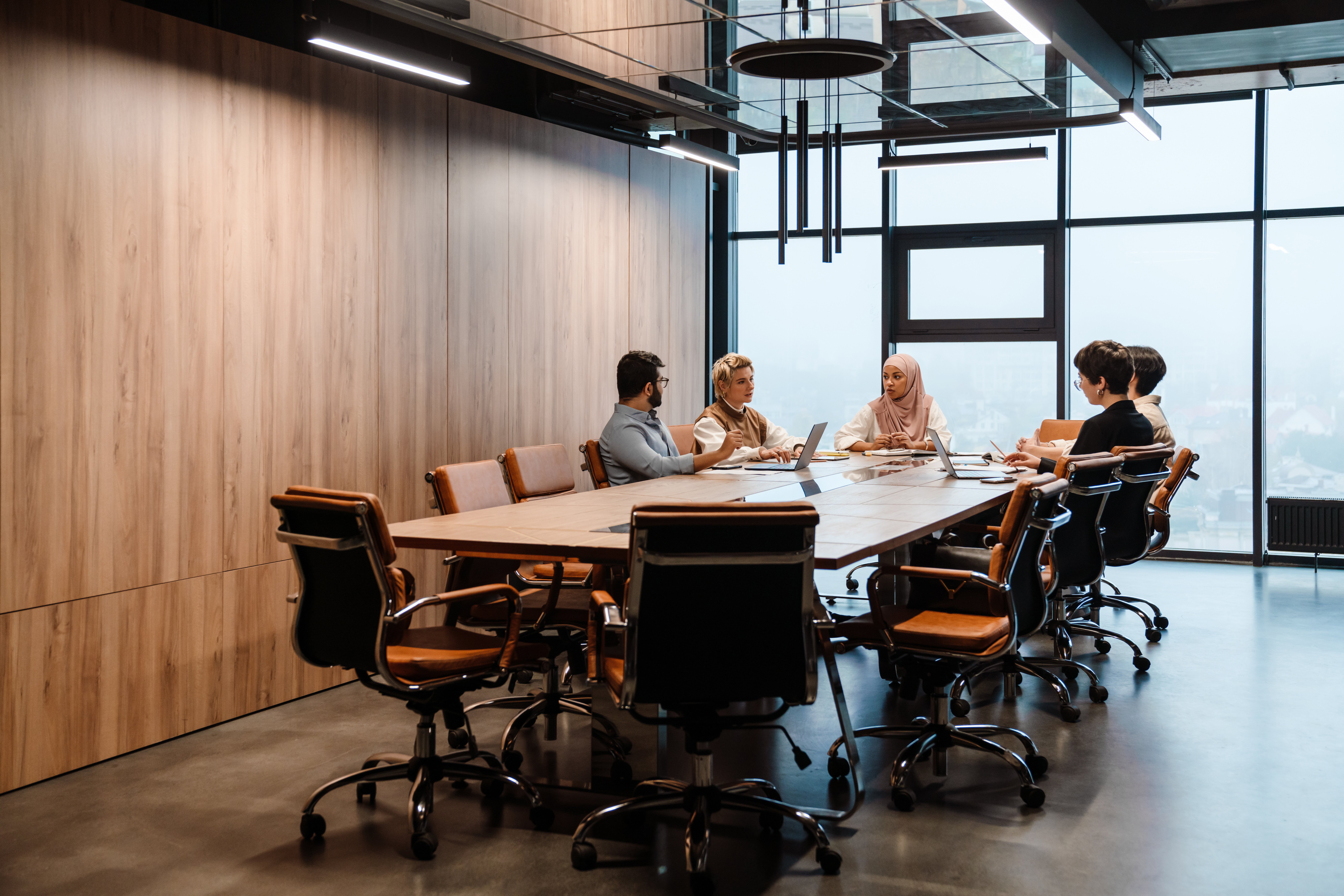The Coronavirus pandemic is wreaking havoc on the economy, the healthcare system, and our world as a whole.
If you're a business owner, you might wonder what the best practices are when you're ready for everyone to come back to work. It's important to make some changes so that your office is set up to be a safe place for you and your staff.
Before you ask your employees to come back into the office, read on for some helpful tips that will guide you toward making a sound decision for a healthy, safe, and productive workplace.
Create a Clean Environment
You're probably excited and a bit nervous to have everyone come back to work, but there are some serious precautions that should be put in place first. COVID-19 is a contagious virus that can spread rather quickly if you're not careful.
If desks and other work surfaces are filled with clutter, remove the clutter to make surfaces easier to clean.
You'll need to give the entire office, including the break room and restrooms, a thorough deep cleaning. If you need help, consider hiring a professional cleaning company that can disinfect the entire office in a safe, effective way.
Provide your employees with enough supplies so that they can wipe down work surfaces any time they need to. Make sure the bathrooms and supply closet are stocked with soaps and other cleaning products.
Place bottles of hand sanitizer throughout the office, or install wall-mounted hand sanitizer dispensers so everyone has access to them. Use disinfecting hand soap in all restrooms and the break room so employees can wash their hands as soon as they touch surfaces.
Another good way to reduce the chances of spreading the virus is to install automatic door openers or foot-operated door openers. This simple fix will allow your colleagues to open doors without needing to touch the handles.
Consider installing mobile phone sanitizing devices that use ultraviolet light. The anecdotal story about “dirtier than a toilet seat” is unfortunately true for our mobile devices, and dangerous microbes can be transferred from the screens to our mouths or eyes through touch by making a call.
From conference tables to countertops, consider changing these surfaces to materials featuring anti-microbial properties. Non-porous solid surfaces can offer protection against bacterial growth and are often used in healthcare settings. Copper and silver both have natural antimicrobial properties and there are laminate products on the market that employ the use of silver ions that help prevent microbial growth, mold, and mildew. There are even products that weave antimicrobial materials into fabrics to create safer desk chairs and sofas.
Check door handles and faucets to see what material they're made of, and switch over to copper alloys, such as brass, if possible. Metals containing copper can reduce the potential for spreading infection. Antimicrobial coatings can be added to stainless steel or aluminum door and plumbing hardware, but these coatings are not durable and will wear off through use. Solid brass or even brass-plated metals will retain their antimicrobial properties throughout the life of the product.
Another option is “touchless” hardware throughout restrooms - automatic flush valves, sink faucets, and paper towel dispensers.
COVID-19 is transmitted through the air, which means you'll also want to make this part of the focus. Wearing masks doesn't always work, especially if you need to talk on the phone or via video with customers and clients.
To reduce the spread, have your office's HVAC system checked and consider upgrading to a HEPA system. This will filter the air more effectively and create cleaner air for everyone. You can also set up the system to dilute the indoor office air with outdoor air, which can reduce the odds of breathing infected air into the lungs. Long-term improvements to your HVAC could include ultraviolet lights within the system. These lights actively kill bacteria and viruses.
A short-term solution would be to add portable air handlers, like Molekule, to clean and purify the air of viruses and bacteria.
Create a Socially Distanced Environment
When you finally bring employees back into the office, make sure you divide them into separate groups or zones within the office. This way, if an outbreak occurs, it affects a smaller number of your staff, and potential contact can be more easily traced.
Create a new floor arrangement that lays out your office in a safer way. Make sure you move desks or workstations at least six feet apart from each other to encourage proper social distancing. Consider all adjacencies in your planning.
If you have small conference rooms, avoid using them and move meetings of all sizes to a larger conference room. Make sure there's sufficient space between chairs, and include chairs along the walls as needed to provide more distancing. Remove excess chairs from the room, and keep the room well-ventilated.
Mark the floors and common traffic patterns so employees know where to stand or walk within the office throughout the day. Observe your employees' movements and think about how you can make the office safer as more people transition back to work. Consider clearly marked one-way entrances/exits and traffic patterns.
You might need to install partitions between workstations or add high-walled cubicles or sneeze guards. For certain employees, private offices may be another option.
For employees not in cubicles or private offices, accent carpeting, rugs, and/or mats that got under workstations and chairs can be used to indicate spacing to discourage circulation paths from being too close to their workstations. This is not just a good idea for distancing, but also reduces the distraction of people walking closely past desks while employees are trying to focus.
Encourage employees to bring lunch from home and maintain safe distances while they eat. You can also schedule lunch shifts to minimize the number of people in the break room. Ask your employees to clean and wipe down all surfaces between shifts to create a sanitized space for the next lunch shift.
Also consider adding a "virtual receptionist" to the lobby area. This is a computerized screen that allows customers, clients, and even employees to check in before they enter the office. The check-in process can be used to confirm the identities of people and to provide them with safety instructions like wearing a mask or using hand sanitizer.
Keep a close eye on your employees' activities and health, and provide them with an environment that is as stress-free as possible.
If you have a staff that is split between in-office and remote workers, make sure the remote workers still feel like they're part of the team. Use video conferencing and messaging applications to keep everyone connected.
Remember that it will take everyone some time to get used to the "new normal" in the workplace.
Create a Phased Approach
Once you're confident that the office is sanitary and safe, it's time to think about how to get back to work. Think about each of your employees' positions and decide which ones need to be in the office immediately, and which ones can work from home.
Start the phase-in with a small number of employees to help ease everyone back into the new environment. Consider job responsibilities and ability to work well remotely, among other factors. Also, consider delaying the return of those employees who are in the high-risk category, those who have children at home with no access to childcare, and those who can only access work via mass transit.
You could also employ partial telework with alternate days in the office, having some employees come in on Monday, Wednesday, and Friday and others come in on Tuesdays and Thursdays (A/B days).
Also consider how many employees can continue to telework on a more permanent basis. This can be a huge change for you and your workers, but it's the most effective way to prevent the spread of the coronavirus in the office.
You may also want to stagger arrival times. This way, your employees can come into the office slowly and in a manageable, measured way. Another option is to run split shifts. Having early and late shifts each day will cut down on the number of employees in the office at one time, and will allow time for deep cleanings in between the shifts.
Create Open Communication
Once you feel like you've developed a solid plan, communicate it in detail to all employees. Make sure that everyone is on the same page, and address questions so you can help clarify and clear up any confusion.
Also ask employees to report if they have been in the office and become sick so that you can take appropriate measures to clean any contaminated areas.
Be sure to develop clear signage and training materials so your employees understand exactly what is expected of them in the new workplace. But don’t forget that they are human, and while they likely have anxieties, they also need positive human interaction too.
Much of the workforce has been isolated for quite some time now. It will be difficult for some employees to return to work after being at home for an extended amount of time. Be patient with your colleagues and encourage an open-door policy where concerns and fears can be addressed without fear of repercussion.
With patience and strategic planning, you can make it easier for everyone to come back to work in a safe manner. Revise your plan as needed until you find the perfect fit and rhythm for your business.
________________________________________________






.jpg)




.jpg)


.jpg)
.jpg)
-1.jpg)
.jpg)
.jpg)
.jpg)
.jpg)
.jpg)

